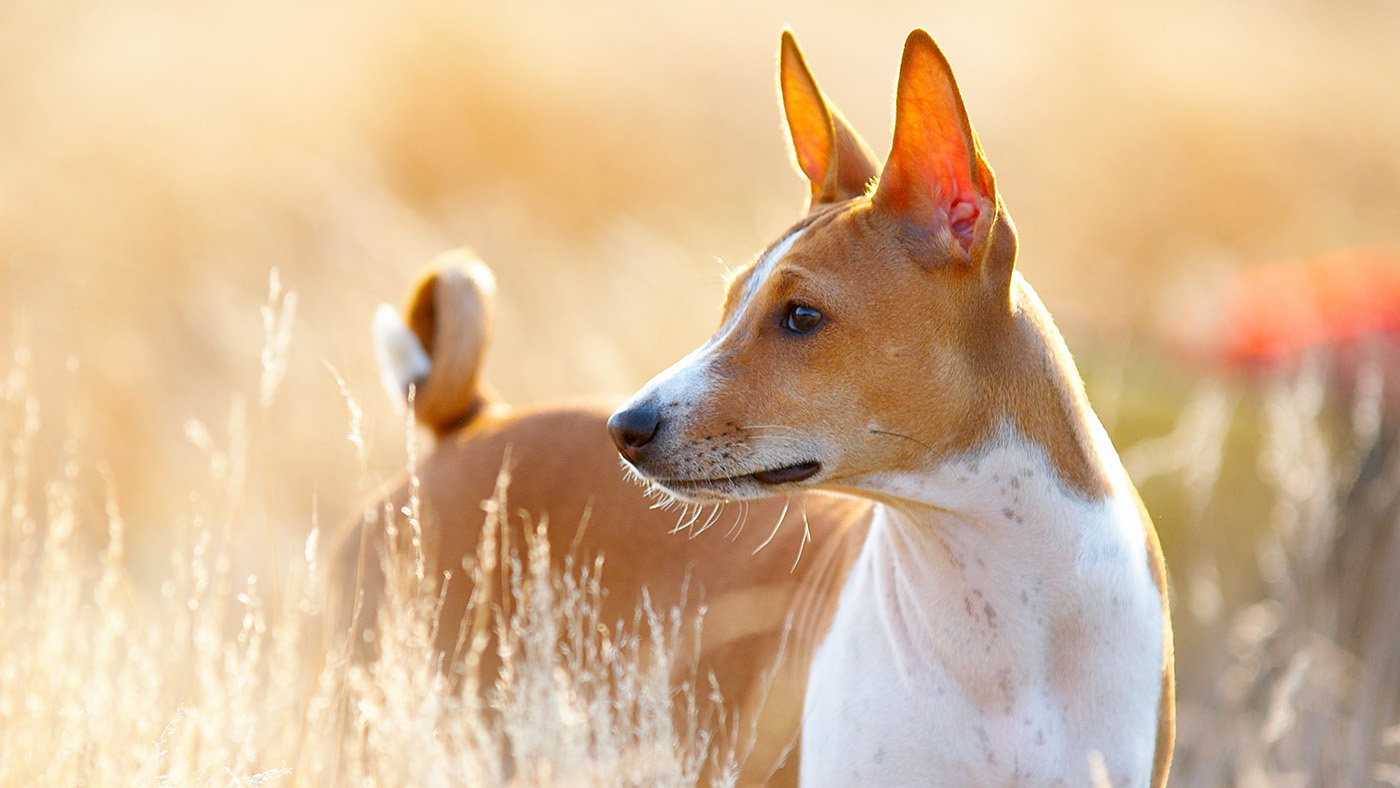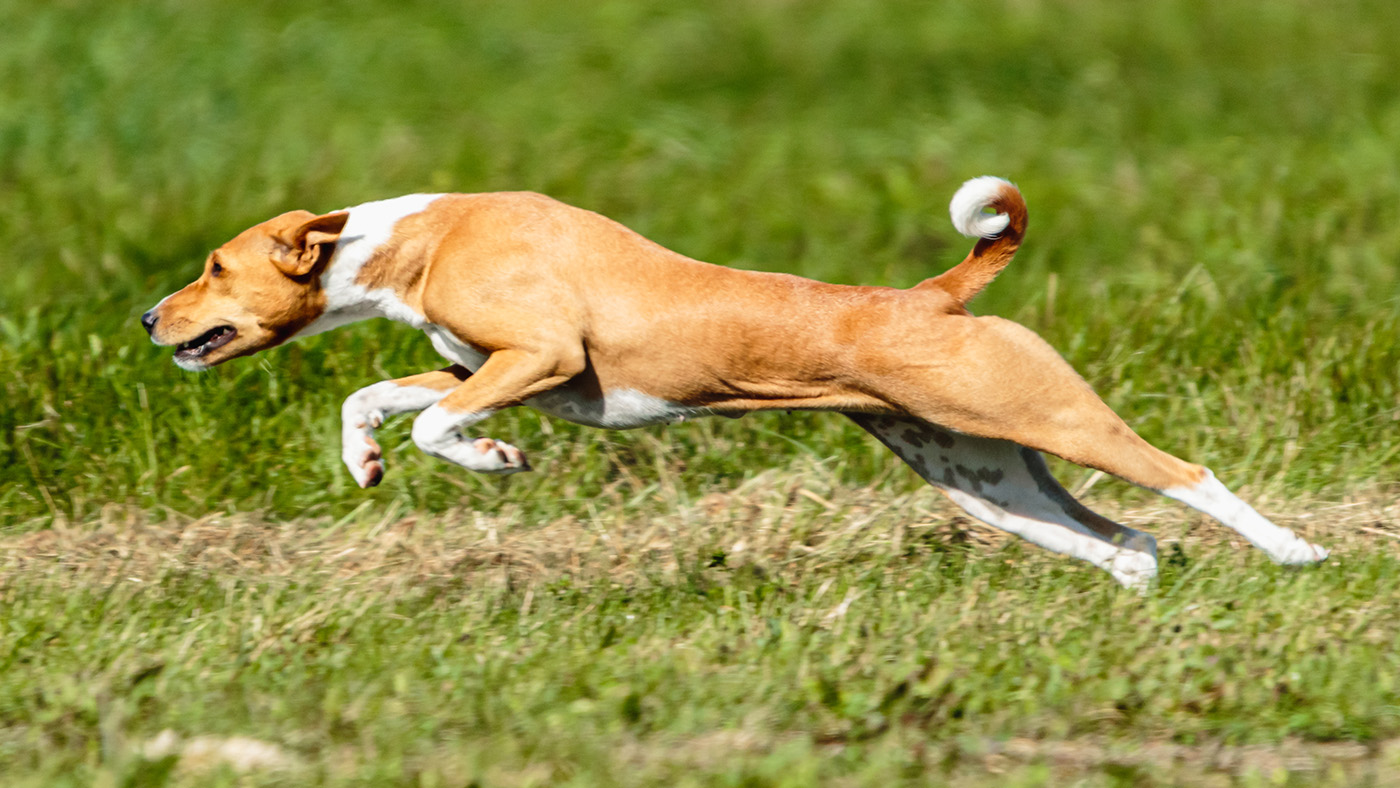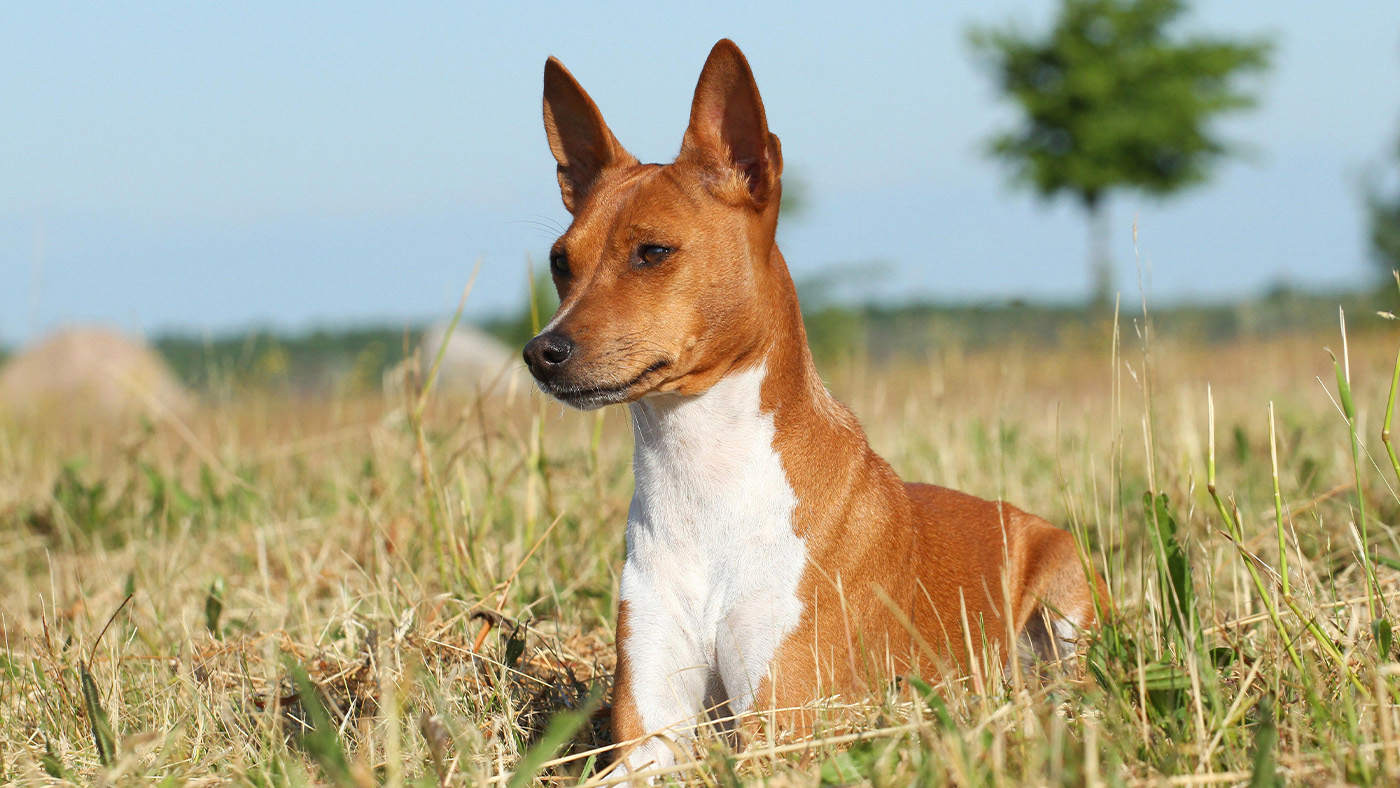

Life expectancy: 12–16 years
Size: 17 inches (male); 16 inches (female)
Coat: Short coat
Temperament: Affectionate, alert, energetic, confident, curious
Exercise needs: More than an hour daily
Origin/native country: Congo region of Africa
Basenjis are among the dog breeds most closely related to wolves, and are considered to be the oldest dog breed in the world – vying with the akita inu for such a title. They have been found to share a common ancestor with an extinct population of gray wolves and their history is a fascinating one.
They were originally bred in the Congo and early evidence of them are found in cave paintings in Libya from 8,000 years ago. They appeared to arrive in Europe in the late 19th century although it took longer for them to be introduced to the United States.
Given their background and wolf ancestry, however, is this a breed you’d want in your home? With the help of expert vet Dr Rebecca MacMillan we take a closer look at Basenjis and assess their potential suitability for you based on their needs and inherent behavior.
Do basenjis need a lot of exercise?
Basenji are very active dogs so you need to ensure they have plenty of opportunity to walk, run and play. If you don’t, you run the risk of this breed becoming bored and destructive – it’s going to take a lot of effort on your part to physically and mentally stimulate a basenji.
“Basenjis are a reasonably high-energy breed and they will require at least an hour of physical exercise each day to keep them happy,” says Dr MacMillan.
To be most effective, you would ideally have a safe, secure yard with high fences in which to allow this breed to run and explore, bearing in mind they are a scent hound and have a high prey drive so don’t do particularly well if small animals are around.
When out and about in public, you will also need to keep this dog on a leash and try to keep them away from sights and smells that may prove to be too distractive. You should also remember that this is one of the fastest dog breeds, capable of reaching speeds of 30mph so you won’t want to lose sight of them.

Are basenjis easy to train?
Basenjis are known for having poor recall and they don’t actually take to training all that well. They’re rather independent and appear to view training as something they shouldn’t ought to partake in. But that doesn’t mean they’re a lost cause by any means and you just need to find a way to work effectively with them.
“Basenjis are intelligent, quick learners but they do have a short attention span so keeping training sessions short and positive will help,” says Dr MacMillan. “It is also essential to be consistent with your dog’s training and remain patient throughout – these dogs can be a bit nervous, which will be made worse if you start using any harsh or negative training methods.”
To that end, positive reinforcement is key and having the best dog treats to hand will go down well. With patience and persistence, you’ll be surprised at what this breed can achieve.
Do basenjis make good family pets?
Although a basenji doesn’t mind being left alone and is affectionate with their owner, they aren’t known to get on well with strangers and their high energy levels can be a bit too much for some.
They’re certainly not dogs for first time owners and you may want to steer clear if you have younger children.
“Basenjis are best for families with older children or teenagers, who will be better suited to their high energy levels and stubborn ways,” Dr MacMillan says.
You can, however, comfortably keep this breed in an apartment (so long as there’s good space available outside) and so long as you work on socializing the breed, you should have few issues.

Why don’t basenjis bark?
Basenjis are among the quietest dog breeds so you will find they only bark on very rare occasions. Even then, it’s more of a yodel or howl and it’s rather a unique characteristic.
“They can also yip and yap, but they don’t make a classic barking sound,” Dr MacMillan says, explaining that this is due to their unusual anatomy.
“The size and shape of their larynx affect the ability of the vocal cords to vibrate and produce a deep bark sound.
“So, while they are known as the barkless dog this doesn’t mean they are silent! These dogs will still vocalize loudly when excited or confronted with something unfamiliar.”
Are basenjis aggressive dogs?
Given how antisocial this breed can be with strangers, asking whether or not these dogs are aggressive is understandable. Their strong prey drive and independent streak may also set alarm bells ringing. But don’t worry too much.
“These are not inherently aggressive dogs provided they have the right early socialization and training,” Dr MacMillan says. “Making sure they get enough exercise and mental stimulation will also reduce the risk of behavioral problems developing.”
Do basenjis need a lot of grooming?
With their short coat and a cat-like penchant for keeping themselves clean, basenjis are something of a dream.
“These dogs are low maintenance when it comes to grooming! Their short fur is easy to care for and they should only need brushing once or twice a week,” Dr MacMillan says.
They’re also among the hypoallergenic dog breeds and don’t smell so you won’t need to do too much.
“They are a low shedding breed as well, losing fur at low levels all year round,” Dr MacMillan continues. Just keep their nails nicely trimmed and clean their ears every two to four weeks.
Basenji health problems
The basenji is prone to various health complaints.
“Fanconi syndrome is a common inherited problem in this breed,” explains Dr MacMillan. “The kidneys do not function correctly leading to loss of water, electrolytes, and nutrients in the urine.
“If left untreated, dogs with Fanconi syndrome have muscle wastage, poor condition, and will eventually die. A reputable breeder can DNA screen their dogs to avoid passing this disease on to their puppies.”
Basenjis can also suffer from inherited eye complaints like progressive retinal atrophy (PRA) which again a good breeder should be health screening for.
“This breed is also known to suffer from hemolytic anemia,” Dr MacMillan continues. “Red blood cells become destroyed faster than they are made, causing a decrease in the amount present in the dog’s bloodstream. This leads to symptoms like pale gums, lethargy, rapid breathing and collapse.”
Like many pedigree dogs, luxating patella is common in Basenjis.
“The kneecap of one or both hind legs slides out of position causing limping, discomfort and early arthritic changes,” Dr MacMillan adds. “Mild cases can be managed conservatively but more severely affected dogs could need surgery.”
Should I get a basenji?
You can certainly have your hands full with a basenji but that is not to say you should steer clear. If you’re an active and experienced dog owner, then you should find that you’re more than capable of meeting the challenge.
You will, however, need to be prepared to put in the time and understand the frustrations of training a dog that isn’t amazingly responsive. At the same time, you need to be sure their surroundings are appropriate – if they are going to be off-leash outside, then you need to ensure you have the space and the right fencing to prevent escapes. It can be a lot of investment.
Read next: Best hunting dogs
Edited by Georgia Guerin.







